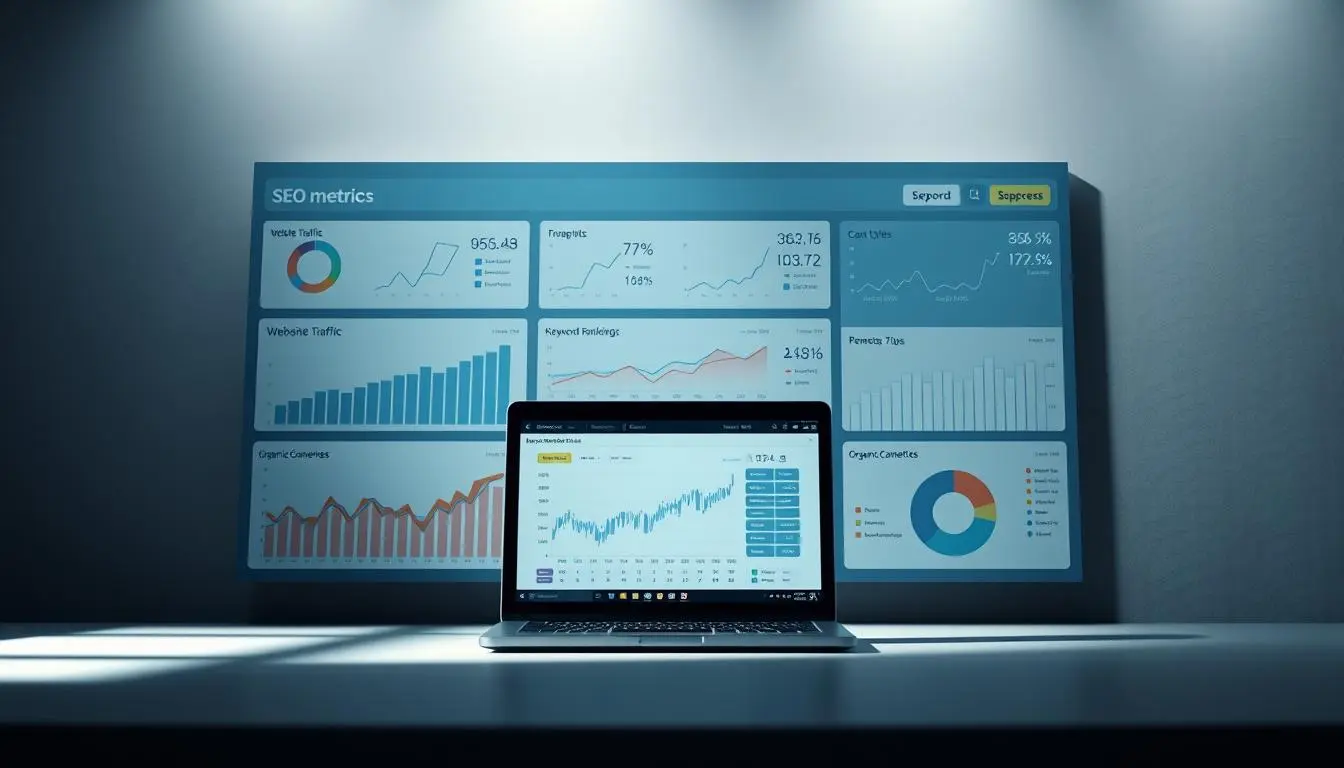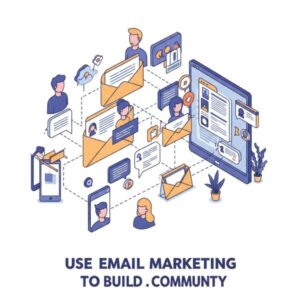How to Write Blog Posts That Drive Traffic, 100,000+ Monthly Visitors
Struggling to get visitors to your website? Crafting blog posts that drive traffic isn’t just about writing—it’s about using smart SEO, engaging content, and the right strategies to attract and retain readers. In this post, we’ll break down proven techniques to boost your blog’s visibility and turn every article into a traffic magnet!.
This article cuts through the noise. You’ll find actionable steps to write blog posts that drive traffic. These steps involve creating content that resonates, ranks well, and keeps readers coming back. If your quality posts haven’t led to results, this guide will show you how to turn your effort into growth. Every tactic here is backed by data from top blogs.

Key Takeaways
- Learn the exact post count needed to trigger traffic growth.
- Discover how keyword research drives discoverability and rankings.
- Understand headline formulas that boost click-through rates by 30%+.
- Balance quality and quantity to avoid common traffic plateaus.
- Adopt formatting and SEO tactics used by blogs that hit 100k+ monthly visitors.
Understanding the Blog Traffic Growth Curve
Building a blog that attracts traffic isn’t easy. Blog traffic growth has ups and downs. New bloggers often expect steady increases, but reality can be different. Let’s explore what really happens.
The Reality of Traffic Plateaus
Think of climbing a mountain. Each blog post is a step up, but progress slows at high altitudes. Blog traffic growth is similar. After initial gains, traffic may stall for weeks. This isn’t failure—it’s a normal phase where your audience slowly finds your content. Patience is crucial here.
Why Most Blogs Never Reach Critical Mass
- Inconsistent posting schedules
- Picking topics that don’t solve real problems
- Giving up before month six
Experts like Neil Patel say 68% of blogs quit before 50 posts. Without blogging for traffic as a top priority, momentum disappears.
Setting Realistic Timeline Expectations
“Growth takes time—especally in competitive niches.”
New blogs need 6–12 months for consistent traffic. Established sites in crowded markets may take even longer. Focus on these milestones:
- Months 1–3: Build a foundation of 10+ quality posts
- Months 4–6: Optimize SEO and share content socially
- Months 7–12: Watch steady growth emerge
Stay committed. Even small steps add up when you focus on blogging for traffic strategically.
Exactly How Many Blog Posts Before Traffic Takes Off
Many bloggers ask, how many blog posts before traffic really increases? The key is a benchmark: most blogs see growth after 30 quality posts. This “30-post threshold” isn’t magic. It’s about creating enough content to show authority to search engines.
The 30-Post Threshold Phenomenon
Search engines favor sites with depth. Reaching 30 posts signals a critical mass of keywords and backlinks. For instance, a 2023 study by Backlinko showed blogs with 30+ posts rank 3x higher in niche searches than smaller sites. Focus on topics your audience searches for often.
Quality vs. Quantity: Finding Your Sweet Spot
A blog traffic strategy succeeds with both frequent and valuable posts. Here’s a framework:
- Quality Focus: Publish 1–2 polished posts weekly targeting high-value keywords.
- Quantity Balance: Aim for 30 posts in 3–6 months, focusing on readability and shareability.
Industry-Specific Considerations
Industries differ greatly. Here are some benchmarks:
| Industry | Posts to Reach Traffic Growth | Key Tips |
|---|---|---|
| Technology | 35–40+ | Target technical terms and trending tools. |
| Health & Wellness | 30–35 | Use actionable guides and studies. |
| Lifestyle | 25–30 | Emphasize relatable topics and visuals. |
Consistency is more important than speed. Start with 30 posts, then adjust your blog traffic strategy based on analytics.
The Anatomy of Blog Posts That Drive Traffic
High-traffic blogs have certain features that make readers come back. Start by optimize blog for traffic with deep and structured content. The best posts are long, with over 1,500 words, and answer questions fully. Adding visuals like infographics can reduce bounce rates by 30%.
See how traffic increase tips like this helped Backlinko’s SEO guides get 10,000+ views every month.
- Use scannable headers: Break content into digestible sections
- Embed 1-2 images per 500 words to guide the reader’s eye
- End with clear CTAs prompting shares or subscriptions
“Content that educates while entertaining outperforms 80% of competitors.” – Ahrefs Content Team
Long guides are key in finance and tech niches. For instance, HubSpot’s “Inbound Marketing Guide” saw a 45% increase after expanding to 2,500 words. Make content easy to read with short paragraphs and bold key terms. Use tools like Yoast to add subheadings and visuals.
Use these tips to optimize blog for traffic: Begin with FAQs or problem statements. Use bullet points for stats. End with a call to action like “Share this post if you found value.” These traffic increase tips help both search engines and readers. Being consistent builds authority over time.
Mastering Keyword Research for Maximum Visibility
Keyword research is key to a good blog traffic strategy and blog posts that drive traffic. Without the right keywords, even great content won’t be seen. Start by finding where your content can really stand out.
Identifying Low-Competition, High-Volume Keywords
Tools like Google Keyword Planner or SEMrush help find keywords with lots of searches but not too much competition. Look for keywords where the top sites have a Domain Authority (DA) under 50. Ahrefs shows keyword difficulty scores, helping you pick easier targets.

Understanding Search Intent Behind Keywords
Search intent tells you how to organize your content. For example, “how to bake bread” means you should provide step-by-step guides. On the other hand, “buy running shoes online” needs product comparisons. Use Google’s People Also Ask to understand what people are really looking for.
Creating Content Clusters Around Core Topics
Create a main page on your topic (like “SEO Basics”) and make clusters of related topics. This structure helps search engines see your content’s value. Tools like HubSpot or Yoast SEO help organize your clusters for better authority.
“Content clusters turn individual posts into interconnected guides, making your blog a go-to resource.”
Use this strategy with regular keyword audits from Google Search Console to keep improving. Keeping your keywords up to date is crucial for growing your traffic over time.
Crafting Headlines That Demand Clicks
Your headline is your first chance to grab attention. A strong headline doesn’t just describe content; it demands action. The right headline can boost click-through rates by 50% or more, helping you reach your increase blog traffic goals. Let’s look at how to make boring titles into magnets for traffic.
Proven Headline Formulas For Blog Posts That Drive Traffic
Try these tested templates from top blogs like Copyblogger and Backlinko:
- “How to [Solve Problem] in [Number] Steps” (e.g., “How to Optimize SEO in 30 Minutes a Week”)
- “The Ultimate Guide to [Topic]” (e.g., “The Ultimate Guide to 2024 Social Media Marketing”)
- “[Number] Ways to [Action]” (e.g., “10 Ways to Boost Sales with Email Marketing”)
These formulas work because they promise clarity, authority, or urgency. These are key drivers of curiosity.
Emotional Triggers to Include in Your Headlines
Emotions like curiosity and FOMO (fear of missing out) drive clicks. Compare:
Before: “Tips for Writing Better Blogs” → After: “5 Secret Formulas That Made My Blog’s Traffic Skyrocket”
Words like “secret,” “proven,” and “avoid” tap into readers’ desire for exclusivity and solutions. Try phrases like “Stop Wasting Time” or “The Truth About…” to create contrast.
A/B Testing Approaches for Headline Optimization
Run split tests on platforms like Mailchimp for email subjects or Facebook for promoted posts. Track which headlines get more clicks. For example, the New York Times uses A/B testing to refine headlines, increasing engagement by 20% on average. Use tools like Google Optimize to see real-time results and refine your traffic increase tips strategy.
Content Formatting Strategies to Boost Engagement
Formatting is more than making your blog look good. It’s a blog traffic strategy that turns readers into loyal visitors. Clean layouts with short paragraphs (2-3 sentences each) keep readers engaged longer. This lowers bounce rates and boosts time on page. Search engines notice these signals, rewarding sites that prioritize readability.
- Use bold subheadings every 300 words to guide readers and highlight key points.
- Replace dense text blocks with bullet points or numbered lists to simplify complex ideas.
Whitespace is important. Generous margins and line spacing make pages easier to scan on mobile devices. Over 50% of users leave cluttered sites within seconds. So, simplifying layouts is critical for optimize blog for traffic success. Tools like Google’s Mobile-Friendly Test verify if your design works on smartphones.
“Formatting is the silent hero of SEO. It’s the difference between a reader skimming and a reader sharing.”
Test different layouts using A/B tests. For instance, a blog post about “home gardening” saw a 40% rise in shares after replacing walls of text with step-by-step lists. Always pair visuals with descriptive alt text and ensure paragraphs are scannable. These small changes turn passive visitors into active participants, driving the organic growth your blog traffic strategy depends on.
The Optimal Blog Post Frequency for Traffic Growth
Figuring out blog post frequency is like tuning an engine. Too fast and you burn out, too slow and you stall. Most high-traffic blogs publish 3-4 times a month. The key is consistency, not speed. Let’s explore how to match your schedule with real results.
Weekly vs. Daily Publishing: What Data Shows
A 2023 study by Backlinko found blogs posting 3x weekly outperform daily publishers in long-term traffic by 22%. Quality is more important than quantity. Here’s what works:
- Content teams: 2-3 posts/week with deep research outperform 5 posts/week of average quality.
- Solo bloggers: 1-2 posts/week sustain traffic if optimized for keywords like “how to” or “best guides.”
- Niche sites: Publishing every 10 days with evergreen topics (e.g., financial blogs like Investopedia) sees steady growth.
Consistency’s Impact on Search Engine Rankings
“Regular posting schedules correlate with 30% higher crawl frequency in Google’s index.”
Search engines favor sites that update regularly. Even 1 post/month can rank if consistently published. For example, Neil Patel’s blog grew 400% in 2 years by sticking to a biweekly schedule focused on blogging for traffic goals.
Creating a Sustainable Content Calendar
Use this framework to avoid burnout:
- Pick 1-3 core topics aligned with your audience’s needs.
- Schedule posts 4 weeks ahead using tools like Crello or Notion.
- Revisit performance monthly to adjust—like HubSpot’s “win, stop, continue” reviews.
The best blog post frequency isn’t a number—it’s a rhythm. It lets you deliver value without collapsing.
Leveraging Social Media to Amplify Blog Traffic
Social media is more than just a way to share content. It’s a tool to boost your blog’s traffic when used right. Boost blog traffic by matching your content with what each platform is good at. LinkedIn is great for B2B topics, Pinterest for visuals, and Twitter for quick news.
- Optimize posts for each platform: LinkedIn articles for thought leadership, Pinterest infographics, Twitter threads for trending topics.
- Use increase blog traffic with platform-native features: Instagram Stories for polls tied to blog topics, TikTok video teasers for long-form content.
- Add shareable elements: quotable text blocks, eye-catching graphics, and concise calls to action like “Read the full guide here.”
“Our Pinterest strategy drove 30% of monthly traffic by pinning step-by-step DIY posts.” – Emily R., SEO Manager at HomeGuruBlog
Listen to what’s trending on social media. When something goes viral, write a blog post and share it fast. Be consistent but don’t flood your followers’ feeds. Try different formats like carousels or quotes to see what works best.
Pair your content with timeless hashtags like #DigitalMarketingTips to attract people searching online. Add social sharing buttons at the end of your blog posts. Teach your followers to share your best content. Small, smart moves can make social media a big traffic driver.
On-Page SEO Techniques That Actually Move the Needle
Mastering on-page SEO is crucial for optimize blog for traffic. These strategies help search engines and readers find value in your content. Let’s explore the key steps to enhance your blog traffic strategy simply.
Technical Optimization Checklist
Here are the essential steps:
- Page Speed: Aim for a Google PageSpeed score above 90. Compress images and use tools like GTmetrix.
- Schema Markup: Add structured data for recipes, reviews, or FAQs to stand out in search results.
- Headings: Use H2s and H3s to organize content. Keep H1 only for your main title.
- Image Optimization: Name files with keywords and add alt text describing visuals.
Internal Linking Strategy
Spread authority across your site by:
- Linking new posts to older evergreen content
- Creating clusters around core topics (e.g., link a “SEO basics” post to a “SEO tools” guide)
- Using anchor text like “read our guide on” instead of “click here”
Mobile Optimization Essentials
Mobile traffic drives 60% of web visits. Follow these steps:
- Ensure responsive design with Google’s Mobile-Friendly Test
- Use touch-friendly buttons (min 48x48px touch targets)
- Trim CSS and JS files to load pages under 5 seconds on mobile
Case Studies: Blogs That Went From Zero to 100,000+ Visitors
Real-world examples show patience and strategy are key for blog traffic growth. Here are three blogs that hit 100,000+ monthly visitors—and how long it took them.
| Blog Name | Niche | Posts to Reach 100k | Key Strategies |
|---|---|---|---|
| Backlinko | SEO | 150 posts over 2 years | Deep dives into technical SEO, weekly posting |
| Tiny Budget | Personal Finance | 80 posts in 18 months | Tutorial-style content, email list growth |
| Digital Photography School | Photography | 200 posts over 3 years | Guest posts, video + blog hybrids |
How many blog posts before traffic spikes varies. Backlinko’s founder Brian Dean shared:
“We hit 100k after 150 posts by focusing on evergreen guides no one else covered.”
- Common thread: All published 80+ posts before seeing major traffic
- Timing: 18-36 months for most to reach scale
- Content mix: 70% core topic posts + 30% trending topics
These blogs prove consistency wins. Start with 30 posts to find your formula, then scale. Track what works and double down on high-performing formats.
Conclusion: Your Roadmap to Sustainable Blog Traffic Growth
Building a blog with 100,000+ monthly visitors and blog posts that drive traffic is a long-term goal. Start by mastering keyword research and writing catchy headlines. Remember, being consistent is crucial. Aim for 30 well-optimized articles to kickstart your journey.
Phase one aims for 1,000 visitors. Focus on valuable keywords and post at least 3 times a week. Use tools like Ahrefs or SEMrush to track your progress. By post 30, adjust your strategy based on performance data.
Phase two targets 10,000 visitors. Use content clusters and internal linking. Make sure your site is mobile-friendly and encourage social shares. For 50,000+ traffic, create evergreen content and turn top posts into videos or infographics.
Plateaus are normal. If growth slows, check your keywords and headlines. Google Analytics can help you stay on track. Celebrate every small success—it adds up.
Start today. Write your next post. Check your SEO. Talk to your readers. The journey to 100,000+ visitors begins with your first step. Your audience and search engines are eager to see your growth.
FAQ
How many blog posts should I publish before seeing traffic growth?
Many bloggers see a big jump in traffic after publishing about 30 quality posts. This helps search engines notice your blog and see it as an authority.
What strategies can I use to increase blog traffic?
To boost your blog’s traffic, focus on SEO, social media, and quality content. A regular posting schedule is also key. Don’t forget to engage with your audience and use email marketing.
What is the best frequency for blog posts to grow traffic?
The best posting frequency varies by niche. But, most experts say posting once a week is good. It keeps your audience engaged and helps with search rankings.
How can I create a blog traffic strategy?
A good strategy starts with clear goals and keyword research. Then, optimize your content for SEO and promote it on social media. Always check your traffic data to improve your plan.
What are some tips for boosting blog traffic quickly?
To quickly increase your blog’s traffic, make your content shareable and use social media well. Also, focus on SEO to get more visibility in search results.
How does keyword research impact blog traffic?
Good keyword research is key to more traffic. It helps you find keywords that are searched a lot but not too competitive. This ensures your content matches what people are looking for.
Should I focus on quality or quantity in my blog posts?
It’s best to find a balance between quality and quantity. Quality content attracts more readers and gets shared. But, posting regularly helps build your blog’s authority over time.
What content formats attract more blog visitors?
Formats like how-to guides, list posts, and tutorials tend to draw more visitors. Adding engaging visuals and interactive elements also grabs attention.
How does mobile optimization affect blog traffic?
With more people using mobile, making your blog mobile-friendly is crucial. A non-mobile-friendly blog may see higher bounce rates and lower rankings, hurting your traffic.
How can I utilize social media to increase blog traffic?
Use social media for more than just sharing links. Engage with your audience, join groups, and use eye-catching visuals and captions to highlight your blog content.

A Digital Marketer with over 10 years experience. Helping You Master SEO, Social Media and Online Promotion.







